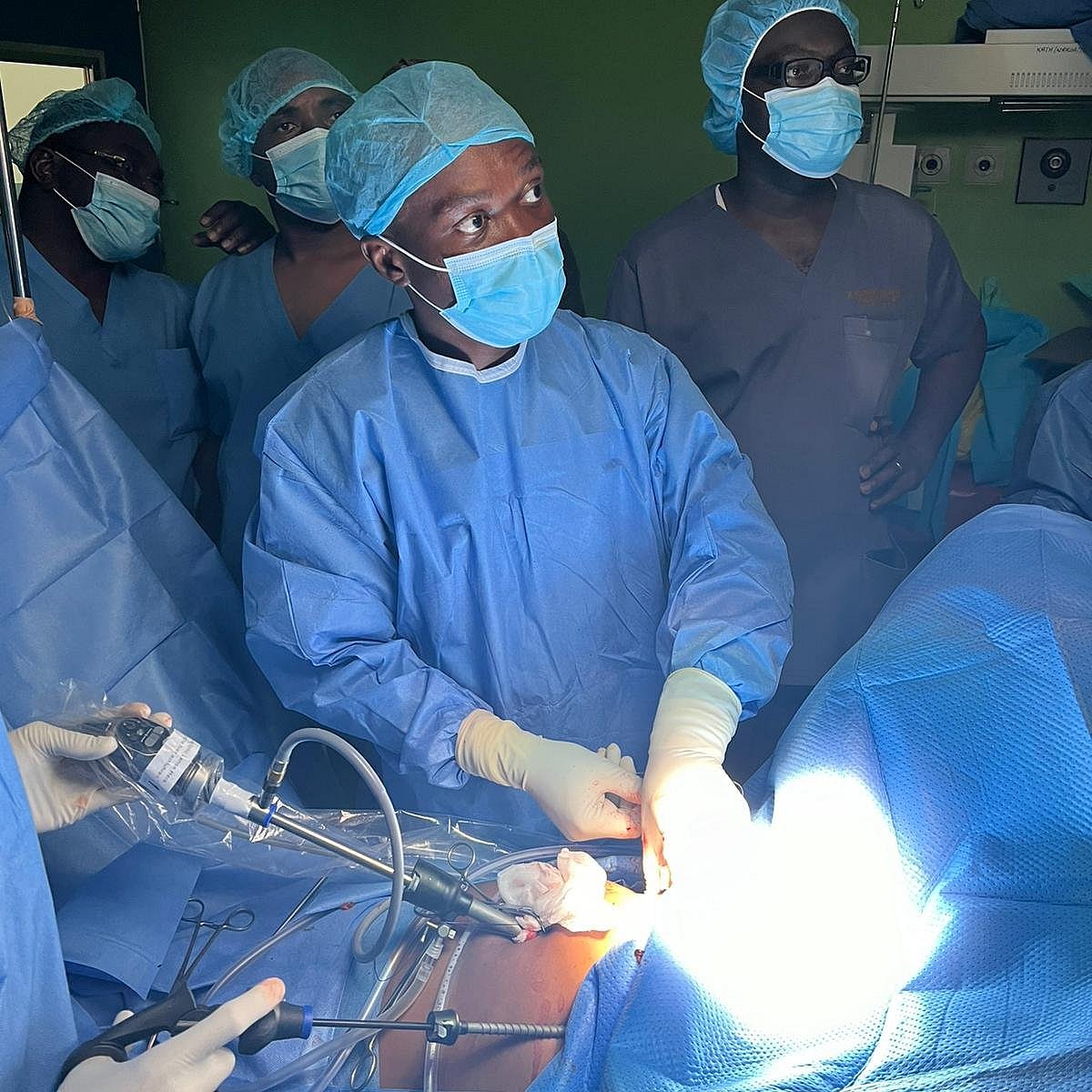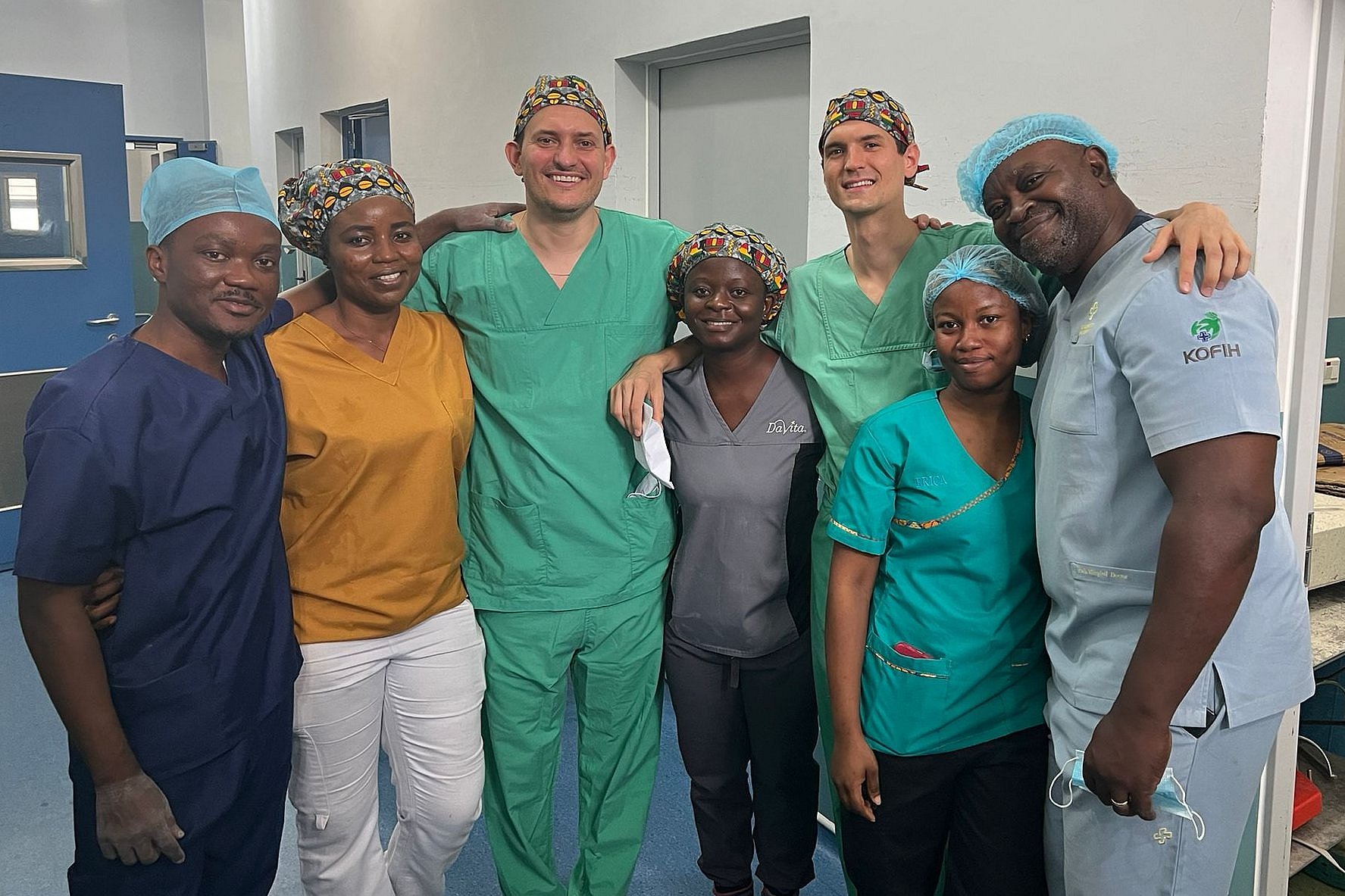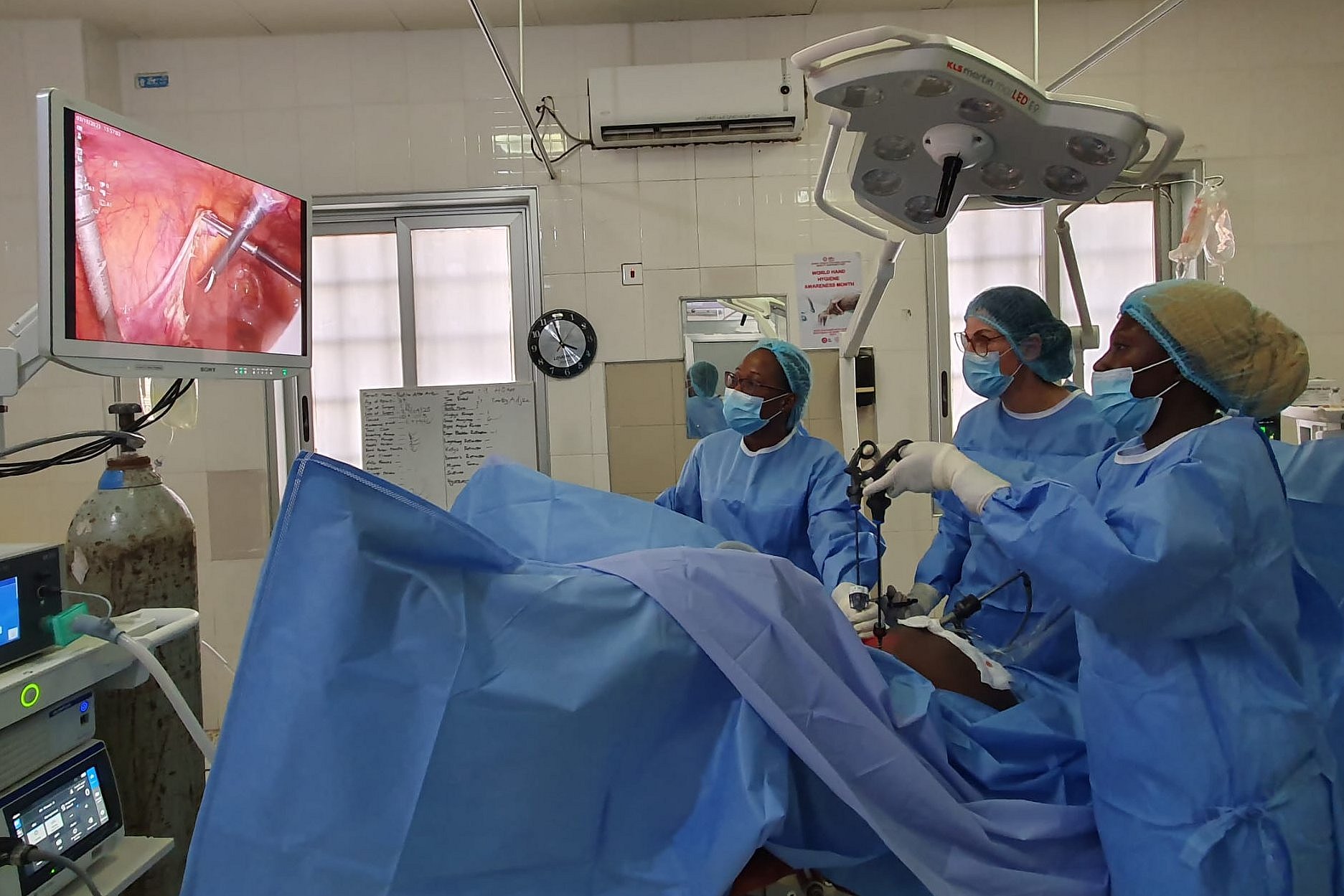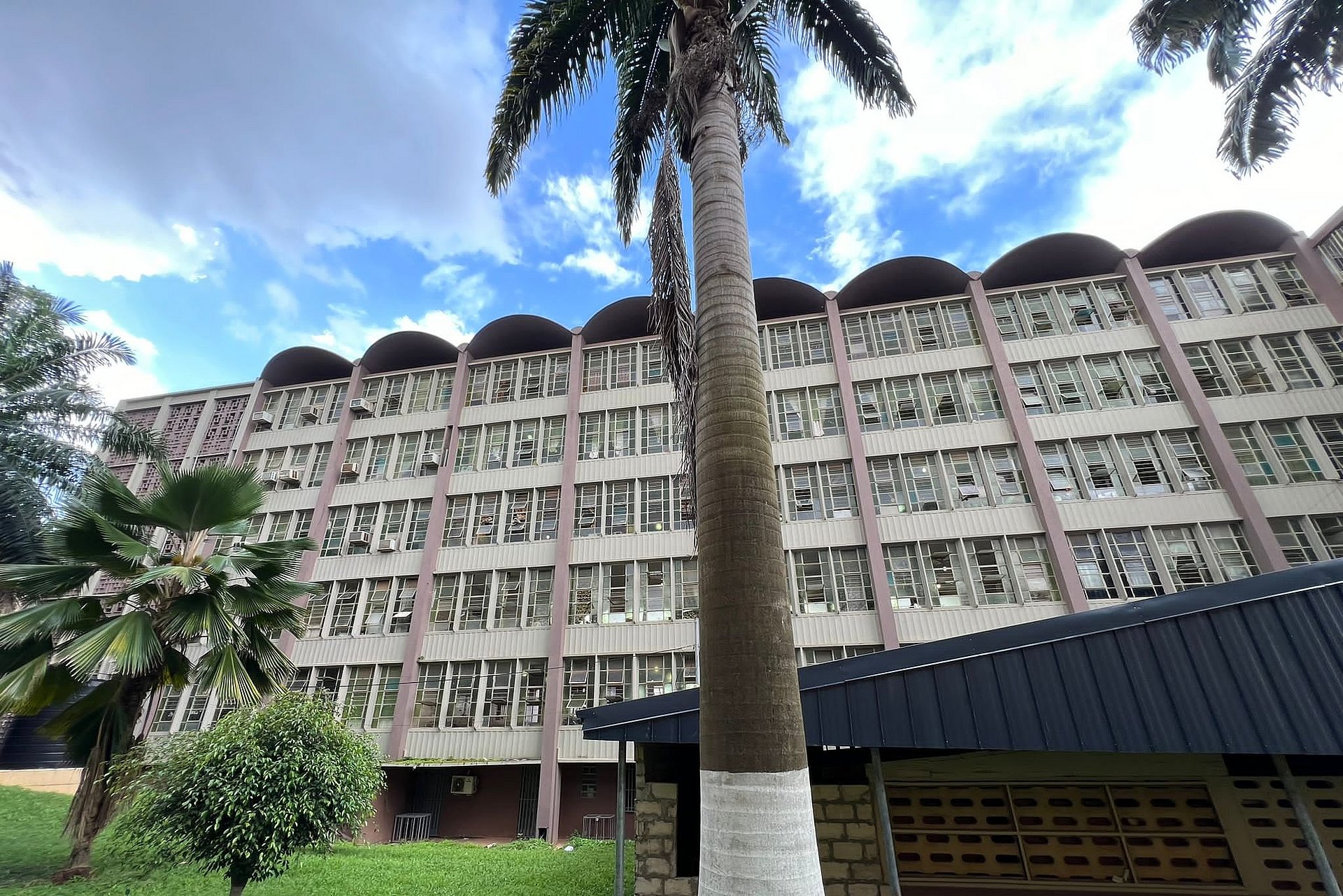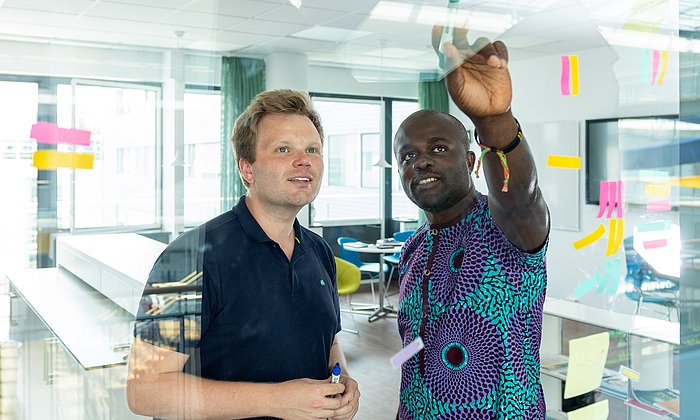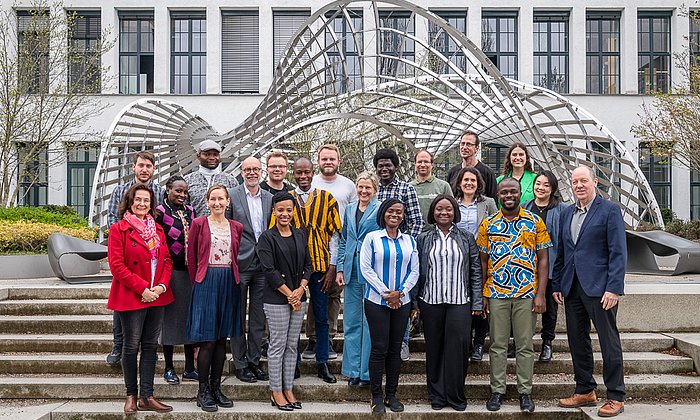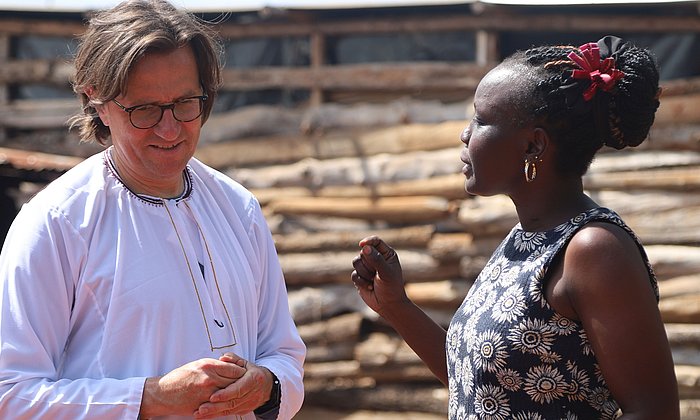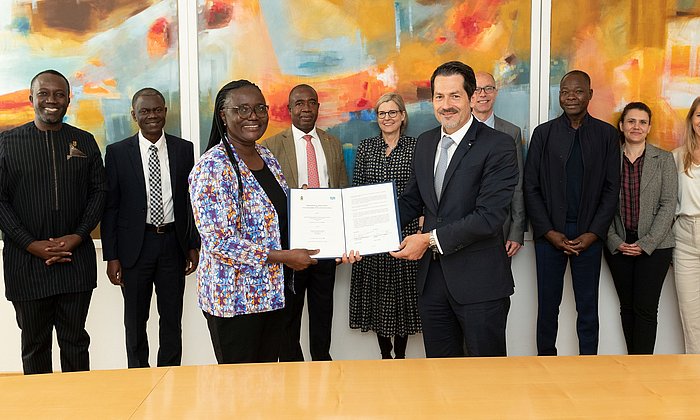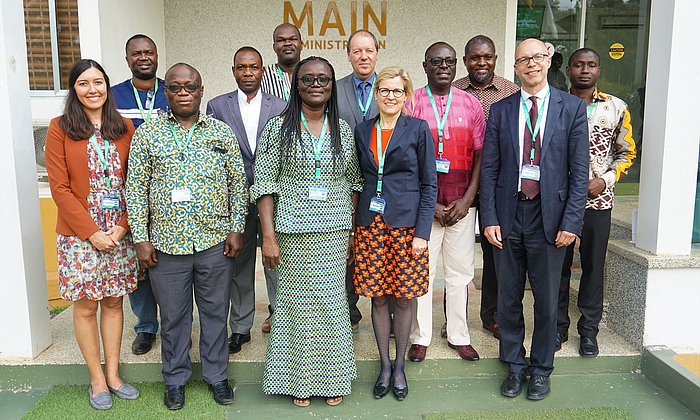On the road with a physician team in Ghana
Traveling for women's health
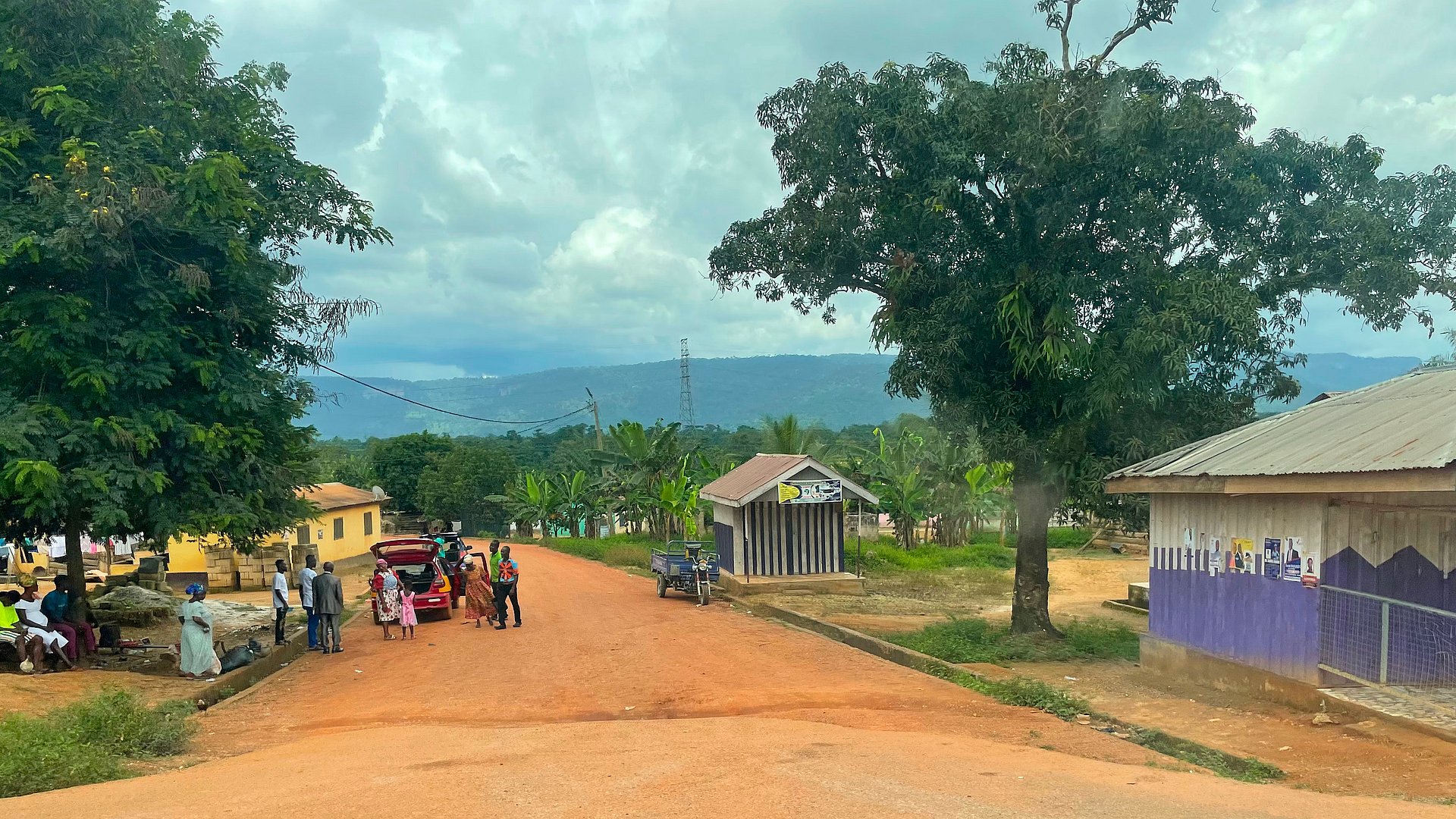
It's early in the morning in Kumasi, Ghana's largest city, located close to the equator. The air is already muggy. We squeeze together in the back seat of a van that will take us to the hospital. Colorful scenes unfold along the route we take, a red sand road: Chickens running free on the street, children playing and darting around and women everywhere on the go carrying heavy loads.
But the women of Ghana bear very different burdens as well: Many aspects of gynecological care leave much to be desired, for example the complete lack of the possibility to perform minimally invasive gynecological operations. Almost all gynecological procedures involve larger abdominal incisions which entail significantly more complications such as infections and adhesions.
The camera's eye replaces the large incision
The objective of our project is to help change that. Thanks to generous support, two highly modern operating towers have already been transported to Ghana, making what are called laparoscopic procedures possible. This "keyhole technology" can be used to perform both routine and emergency procedures through an abdominal incision of only one centimeter. We use a camera which transmits an image of the patient's abdomen to a display. Our objective is to train physicians on location to conduct these procedures themselves in the future.
Led by Prof. Marion Kiechle, our six-member team consists of experienced physicians and a surgical nurse. The preparations for the trip took months. Then we had to cancel our flights on very short notice because the instruments were stuck in customs. But now everything is proceeding as planned and we're on our way to our duty, excited about what they day might bring.
Arrival at the hospital
Our driver stops in front of the emergency room of the Komfo Anokye Teaching Hospital (KATH). There is a lot going on here, many people come from the surrounding countries such as Togo and Burkina Faso in search of treatment at KATH. Now it's the rainy season in Ghana. The hot and humid air stands thick in the corridors of the hospital. The path to our ward leads through the emergency room, where droves of patients await treatment. Many of the patients are standing, since the available beds are already occupied by the particularly weak patients. It's hard not to take action here, but this week our station is in the operating room. So we do our best to get through the crowd as quickly as possible.
We had already been at KATH the night before. We examined one patient after another until late evening and chose those patients whose clinical picture most indicated laparoscopy – and whom we would operate on this week. Some of these women go through quite a lot for a chance to benefit from the new surgical procedure – for example a five-hour bus ride to the clinic in Kumasi from Ghana's capital city of Accra far to the south.
A different way of doing things
The first day of surgery is sluggish. The installation of the modern surgical technology proves difficult. An essential gas line melts during installation after being exposed to too high a temperature. We want to get down to work and speed matters up, but we have to accept the fact that many things work differently in Ghana and some things are hard to foresee. Will we be able to operate here at all?
While we try to get the operating room technology up and running, the project's grand opening celebration with the heads of the local municipalities is already in full swing. Our project receives a lot of attention from the media. We're very pleased by the interest, but at the same time we're worried that we may not be able to complete our assignment at all. Finally, with everyone's help, we succeed in procuring a replacement hose and complete the installation, giving us some reason for hope. And what do you know: That afternoon we were able to begin with the first operation.
"Lights off now, please!"
TUM's Prof. Marion Kiechle and Dr. Kwasi Ampem-Darkwa of KATH perform the operation together. The two physicians met already the previous year when the team from Ghana paid us a visit in Munich at the university hospital TUM Klinikum rechts der Isar. Now they are operating on a young woman who has long been suffering from pains in her lower abdomen. The operating room is filled with Ghanaian colleagues from a variety of specialty departments who would like to witness the first laparoscopy with the new equipment at KATH.
Prof. Kiechle demonstrates the minimally invasive surgical access to the abdominal cavity. Then Dr. Ampem-Darkwa sets the trocar – a metal port through which the abdominal cavity is inflated with CO2. Prof. Kiechle says: "Lights off now, please!", a sentence which as yet has never been heard in this operating room before. All eyes are fixed on the camera which is being inserted into the abdominal cavity through the port, illuminating it brightly. The abdominal organs are now visible in high resolution on the monitor. Two more trocars are set in order to be able to use small instruments to carefully push the intestine to one side. The patient had suffered painful adhesions in the aftermath of an infection. Prof. Kiechle and Dr. Ampem-Darkwa transect the adhesions and conclude the surgical procedure after a short period of time with no further complications.
The procedures in the operating room improve from day to day during the course of the week. We move from one to three to seven operations every day and operate on a total of 18 patients. We can train physicians and surgical nurses in parallel using two operating rooms with one laparoscopy tower each. In the process we treat women with abdominal pain, ovarian cysts and uterine myomas. In the meantime the project has attracted much attention and interested hospital employees gather in front of the operating room every day to observe the procedures.
A first emergency
Suddenly we hear that a young woman has come to the emergency room with severe pain in the lower abdomen. The pregnancy test is positive. An ultrasound image raises suspicion of what's called an ectopic pregnancy, in which the embryo attaches outside the uterus. This type of tubal pregnancy is a frequent gynecological emergency, usually only treatable with surgery.
Until now at KATH the patient would have undergone a large abdominal incision with a significantly higher risk of bleeding. In the meantime, however, the Ghanaian team is so well trained and practiced that the procedure can also be performed laparoscopically. The patient consents and is soon put under anesthesia. One day later she can be released from the hospital. The procedure is a milestone for gynecological operations at KATH – together with our Ghanaian colleagues we've achieved our goal!
All the patients we operated on during this week are doing very well following their operations. We're told that every one of them, without exception, is glad to have decided in favor of the new surgical technique. One more reason to continue the exchange with our colleagues from Kumasi in the future. Accordingly, the next visit by the African teams to Munich has already been planned, another step towards improving women's health in Ghana.
-
Since 2017 the university hospital TUM Klinikum rechts der Isar (MRI) and the Komfo Anokye Teaching Hospital (KATH) in Kumasi have been working together to improve training of local specialists with funding from the German Federal Ministry for Economic Cooperation and Development (BMZ) and the Else Kröner-Fresenius Foundation (EKFS). Both university hospitals pursue a widely diversified range of collaborative activities aimed at achieving the most sustainable possible progress both in research and in treatment of patients.
-
The partnership is a part of the strategic alliance between TUM and the Kwame Nkrumah University of Science and Technology (KNUST) in Kumasi, Ghana which began in 2018. Here TUM and KNUST work together to promote projects in the key fields of teaching, research and entrepreneurship in order to drive innovation and sustainable developments.
-
The project received support from the Olympus Europe Foundation, from the non-profit organization Gesundes Afrika e. V. of the Deutsche Gesellschaft für Internationale Zusammenarbeit (German Society for International Cooperation/GIZ) and from the gynecological endoscopy working group Arbeitsgemeinschaft Gynäkologische Endoskopie, among others.
Technical University of Munich
Corporate Communications Center
- Bastian Meyer / Lisa Pietrzyk
- tumcampus@tum.de
- presse@tum.de
- Teamwebsite
